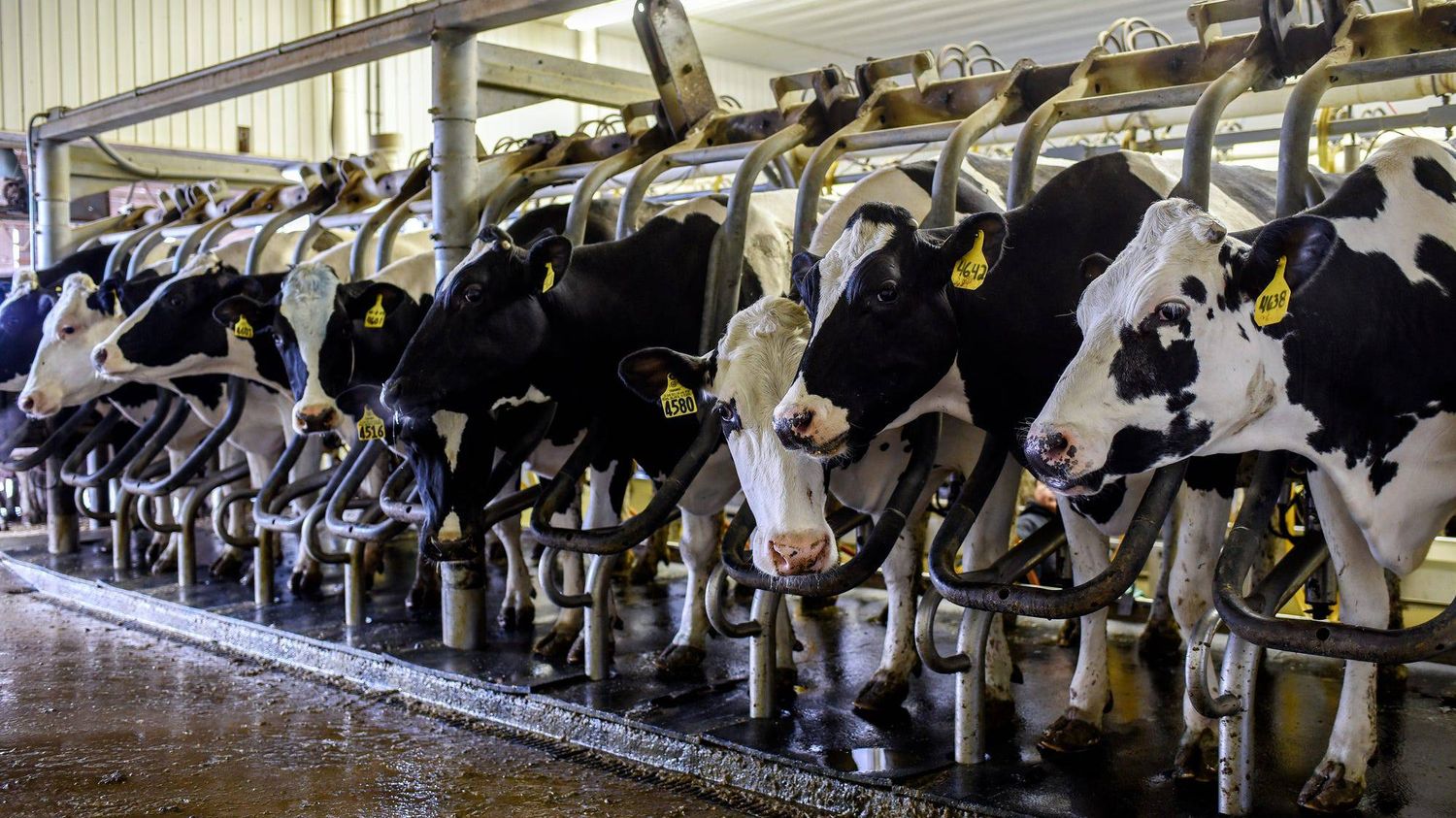This announcement on Monday comes after several reports of contamination of dairy cows in different American states since March 25.

Published
Reading time: 5 min

It’s a first. In Texas, a dairy cow infected a human, who tested positive for avian flu, American authorities announced Monday April 1. Until then, the only similar case recorded in the United States did not concern cattle: in 2022, in Colorado, a person was infected by poultry, according to the American public health agency (CDC). However, for some time now, the H5N1 virus seems to no longer be confined to birds.
It was detected in goats in Minnesota on March 20. On the 25th, cows tested positive on farms dairy companies in Texas and Kansas. Of From Michigan to Idaho to New Mexico, it only took a week for several other cases to be recorded in distant states. A first cause for concern, to which is now added this example of transmission from cattle to humans. Franceinfo returns to several questions raised by these discoveries.
1 What symptoms does the patient present?
The CDC press release is intended to be reassuring about the state of health of the person who tested positive for H5N1. Apart from one “eye redness (compatible with conjunctivitis)”, his health is nothing to worry about. She is in isolation and receiving antiviral treatment for the flu to recover. We simply know that she was “exposed” to dairy cows suspected of being infected.
According to the US public health agency, most signs and symptoms of avian flu infection are similar to those of other respiratory illnesses, such as seasonal flu or Covid-19. In humans, they may include fever, cough, sore throat, difficulty breathing, eye irritation, headache, runny nose, muscle aches or diarrhea.
The World Health Organization (WHO), however, recalls, regarding a fatal case in Vietnam at the end of March, that “Infections in humans can cause severe illness with a high mortality rate.”
2 How is the H5N1 virus spread?
It is precisely the recent developments in the answer to this question that concern specialists. “H5N1 has shown adaptation to mammals, which may explain the widespread transmission to mammals (sea lions, cats, foxes and now cows)”analyzes epidemiologist Deepti Gurdasani on‘”no clear cases of human-to-human transmission have been identified”since “almost all cases had contact with birds/poultry”. The latter remain for the moment the first link in the chain, certain birds migrants who were found dead near farmland where dairy cows contracted the H5N1 virus.
However, the link has not been systematically established, causing serious concern for some epidemiologists. “The introduction of an infected cow from one farm appears to have led to the infection of cows on another farm (without obvious direct contact with infected birds)”, explains Deepti Gurdasani. The researcher at Queen Mary University of London reveals her fear of seeing the contagiousness of the virus increase: “Mammalian-to-mammal transmission has been suspected for some time, but is not confirmed. If sequencing confirms this, it would be a fairly worrying step in the evolution of the virus.”
For the moment, the Texan authorities have at least been reassuring on one point: the infection of cattle does not present a problem for the marketing of milk. Indeed, not only are dairies required to destroy the milk of sick cows, but above all, pasteurization kills viruses. The US Department of Agriculture, however, clarified that “people with close or prolonged and unprotected exposure to infected birds or other animals (including livestock), (…) are at greater risk of infection.”
3 Should the general public be worried?
The American public health agency wants to be reassuring : “This infection does not change the human health risk assessment of H5N1 avian influenza to the general American public, which the CDC considers low”. She also states that “preliminary analysis of H5N1 viruses” does not show any development likely to make them resistant to drugs “currently approved influenza antivirals” in the USA. Therefore, solutions exist, even in the event of propagation.
The risk of a pandemic is all the less present as the analyzes made public by the CDC on Tuesday prove reassuring: “The bovine and human sequences … mostly lack changes that would make them better suited to infect mammals.”
On his X account, epidemiologist Raywat Deonandan, for his part, called for “not react excessively at the announcement that one or two people have caught” bird flu, reminding that animals are monitored “for decades”. “We have the tools and the knowledge to stop it if it becomes a problem, if everyone does their part”estimates this researcher from the University of Ottawa (Canada).
4 Is this a turning point in the global avian flu epidemic?
This case demonstrates that “the virus adapts to mammal-to-mammal transmission, rather than accidental bird-to-mammal transmission”underlines epidemiologist Eric Feigl-Ding, of the New England Institute of Complex Systems in Cambridge (United States), on his account X. This double crossing of the barrier between species indicates, according to him, that ‘“there will inevitably be more human cases of avian flu”. Hence his wish that the CDC favor “prevention and control”.
If the problem is growing in recent days, avian flu has been circulating for several years. Last July, a WHO press release recalled that the organization works with other organizations “to monitor the evolution of these viruses, looking for signals indicating any changes that could be more dangerous to humans”.
